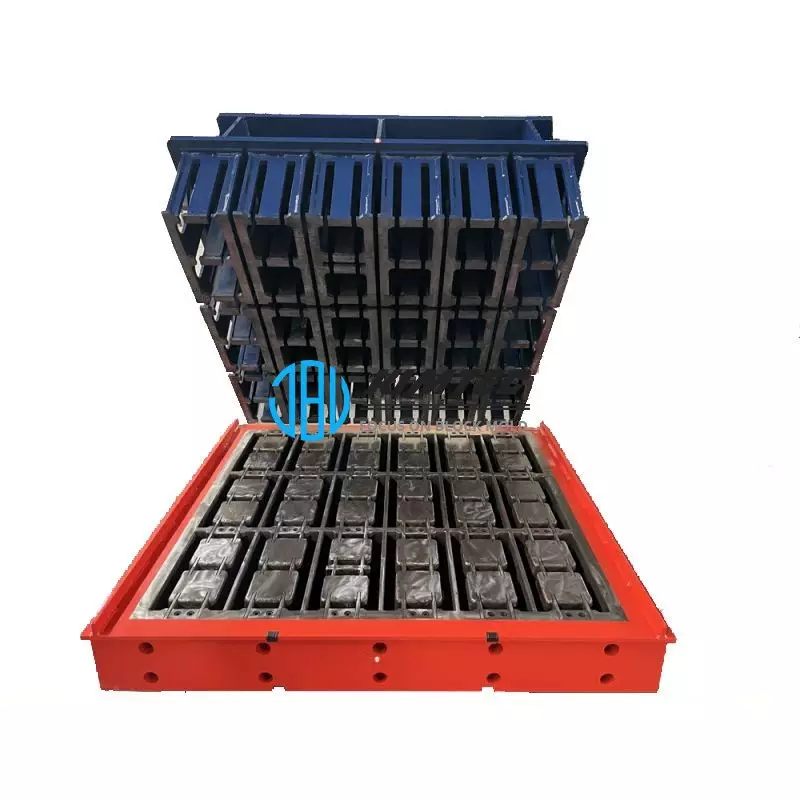Future Trends in Interlocking Molds: What’s Next?
Dec 3, 2024
Interlocking molds play an increasingly important role in concrete block production. As industries strive for higher efficiency, customization, and sustainability, these molds are evolving to meet these demands. The future of interlocking molds looks promising. Several key trends are emerging that will shape their development in the coming years.

1. Advanced Materials for Better Durability
Manufacturing processes are becoming more sophisticated. The materials used in interlocking molds are also improving. New composite materials and high-performance alloys are making molds more durable, reliable, and cost-effective.
- Composite Materials: These materials provide enhanced wear resistance. They extend mold life, reducing the need for frequent replacements and repairs.
- 3D-Printed Molds: 3D printing allows manufacturers to create molds that are highly customizable. These molds can be produced quickly, offering manufacturers flexibility in design.
With these advancements, interlocking molds can withstand harsher conditions. They offer higher durability and lower overall production costs.
2. Customization with CAD and 3D Printing
Customization is one of the most exciting trends in the future of interlocking molds. Technologies like CAD (Computer-Aided Design) and 3D printing enable manufacturers to create molds tailored to specific production needs.
- Faster Prototyping: These technologies speed up the prototyping process. Manufacturers can quickly test new mold designs, reducing time-to-market for new products.
- Intricate Designs: CAD and 3D printing allow for the creation of molds with complex geometries. This leads to more efficient and innovative block production.
Custom molds are essential for manufacturers seeking to optimize production lines and meet unique client specifications.
3. Integration with Automation and Robotics
Automation is becoming the backbone of modern production lines. Interlocking molds are now a key component of automated and semi-automated systems.
- Robotic Handling: Automation with robotics reduces labor costs. It also minimizes errors and improves consistency, especially when handling large volumes of concrete blocks.
- AI-Powered Optimization: AI can monitor mold performance in real-time. It can optimize mold settings and predict maintenance needs, boosting overall efficiency.
Automation is transforming manufacturing. Interlocking molds are critical to these systems, improving speed and reliability.
4. Sustainability and Eco-Friendly Innovations
Sustainability continues to drive change across industries. The manufacturing of interlocking molds is no exception. The future of these molds will focus on eco-friendly materials and practices.
- Recycled Materials: Molds made from recycled or biodegradable materials reduce the environmental impact of production. This aligns with sustainability goals.
- Longer Lifespans: Durable molds reduce waste. They require fewer replacements, helping decrease the environmental footprint of mold production.
Sustainable practices in mold manufacturing are becoming the norm. Businesses must meet stringent environmental regulations.
5. Smart Molds with IoT and Sensors
The future of interlocking molds will be shaped by smart technologies. Embedded sensors and IoT connectivity will make molds more intelligent.
- Real-Time Monitoring: Sensors track parameters like pressure, temperature, and wear. Manufacturers can adjust production processes instantly, ensuring optimal performance.
- Predictive Maintenance: IoT technologies predict when molds will need maintenance. This minimizes downtime and maximizes productivity.
Smart technologies help manufacturers optimize operations. They reduce maintenance costs and improve product quality.
Interlocking Molds for Sale: Market Trends and Pricing
As demand for interlocking molds grows, many companies are offering interlocking molds for sale at competitive prices. Several factors influence mold pricing.
- Material Quality: Higher-quality materials like Q355 steel and imported alloys increase mold prices. These materials ensure superior durability and longer mold life.
- Customization: Custom molds for specific applications or complex geometries are priced higher. The additional design and manufacturing work contribute to the cost.
- Automation Features: Molds designed for use in automated production lines tend to be more expensive. These molds integrate with advanced machinery, improving production efficiency.
When purchasing interlocking molds, businesses should balance cost with quality and functionality. Choosing the right molds ensures that production needs are met effectively.
About KBL Machinery
As a leading interlocking molds supplier, KBL Machinery offers a wide range of solutions for the concrete block production industry. With nearly 30 years of experience, we provide both fully automated and semi-automated concrete block production lines. Our molds are fully customizable to meet local market demands, with specific designs and sizes tailored to the type of blocks required.
We offer comprehensive installation services and exceptional after-sales support, ensuring smooth and efficient production lines. With a commitment to quality and customer satisfaction, KBL Machinery is your trusted partner for high-performance interlocking molds.
